The Boboli Gardens, a UNESCO World Heritage Site since 2013
An inspiration for many other European Royal Gardens such as Versailles in France, the lavish Boboli Gardens make up the largest green area in the historic centre of Florence and one of the world’s most significant examples of Giardino all’italiana. Situated right behind the graceful Pitti Palace, the former residence of the Grand Dukes of Tuscany, this little slice of paradise was commissioned by Cosimo I de’ Medici as a gift for his wife Eleonora di Toledo and laid out in the mid-16th century to a design by Niccolò Pericoli. At the death of the Florentine architect, work was carried out by Fortini, Vasari, Ammannati, Buontalenti, Giulio Parigi and his son Alfonso. Over a span of 400 years, the gardens were expanded and enriched by the Medici, Lorraine and Savoy families.
The Boboli Gardens are a real open-air museum, an oasis in the city that includes gorgeous buildings-turned-museums, sculptures, Roman antiquities, fountains, grottoes and many other treasures. Opened to the public for the first time during the reign of Leopold II of Habsburg-Lorraine, the park is the ideal place to enjoy a Spring walk, an early Summer picnic or a good read under the shade of centuries-old trees. Besides, you can easily spend an entire day exploring the paths without getting bored, all you have to do is make sure you wear comfortable shoes and clothes as there are lots of uphill climbs and stairs.
The first thing you notice when you enter the gardens through the courtyard of Palazzo Pitti is the Artichoke Fountain, whose marble decorations resemble the artichoke foliage. From this 17th century water feature, the view opens up onto a spacious amphitheatre whose shape reminds the viewer of a horseshoe. Inaugurated in 1637, on the occasion of the coronation of Grand Duchess Vittoria della Rovere, the Boboli amphitheatre boasts an ancient Egyptian obelisk in its centre which was brought to Florence from the Eternal City. Past the Amphitheatre, a double ramp leads to the Neptune Fountain, also known to the irreverent Florentines as the “Fountain of the Fork”. At the very top of the Boboli Hill you can admire the Statue of Abundance by Giambologna and Pietro Tacca. Near Forte di Belvedere, laid out on the site of a bastion built by Michelangelo in 1529, is the Giardino del Cavaliere which houses the Porcelain Museum.
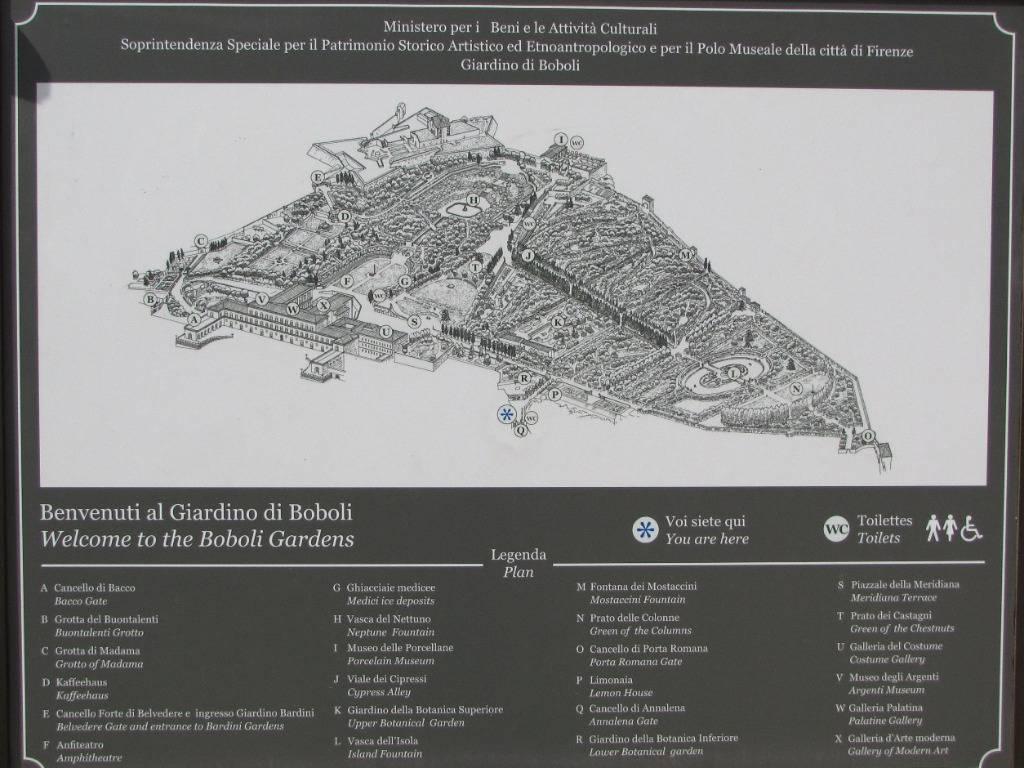
Going northeast from the Statue of Abundance, you will reach the Kaffeehaus (circa 1776) built in the rococo style to a design by Zanobi del Rosso. Continuing along this side of the garden, you will find the small Grotto of Madama – the oldest grotto in Boboli – and the Buontalenti Grotto (1583-1593) one of the strangest and most extraordinary pieces of architecture ever constructed in the city. Before you move to the other side of the park, make sure you wave goodbye to Braccio di Bartolo, the favourite court dwarf of Cosimo I de’ Medici, who rides on the back of a big turtle (Bacchino Fountain).
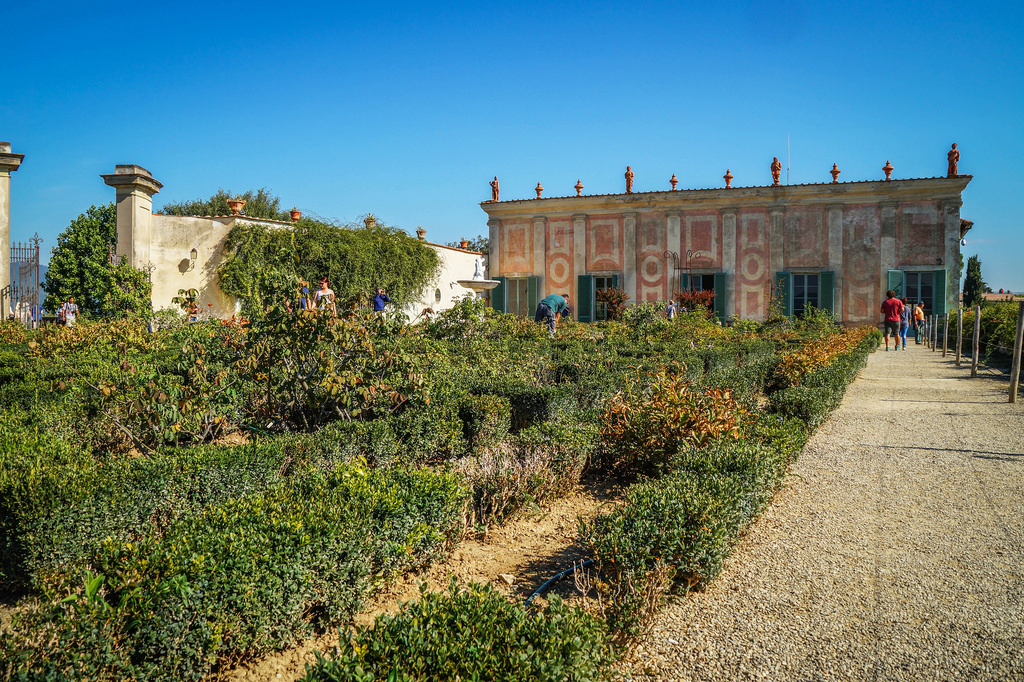
In the shady paths between the amphitheatre and the Prato del Pegaso, you can notice two partially buried buildings, each topped with a dome. These odd buildings were used by the Medici as ice deposits and are surrounded by tall trees. Near the Medici ice deposits is also the Prato dell’Uccellare, a large lawn encircled by centuries-old cypresses and holm oaks, from here you can take the Viale dei Cipressi or “Viottolone” and visit the west side of the gardens.
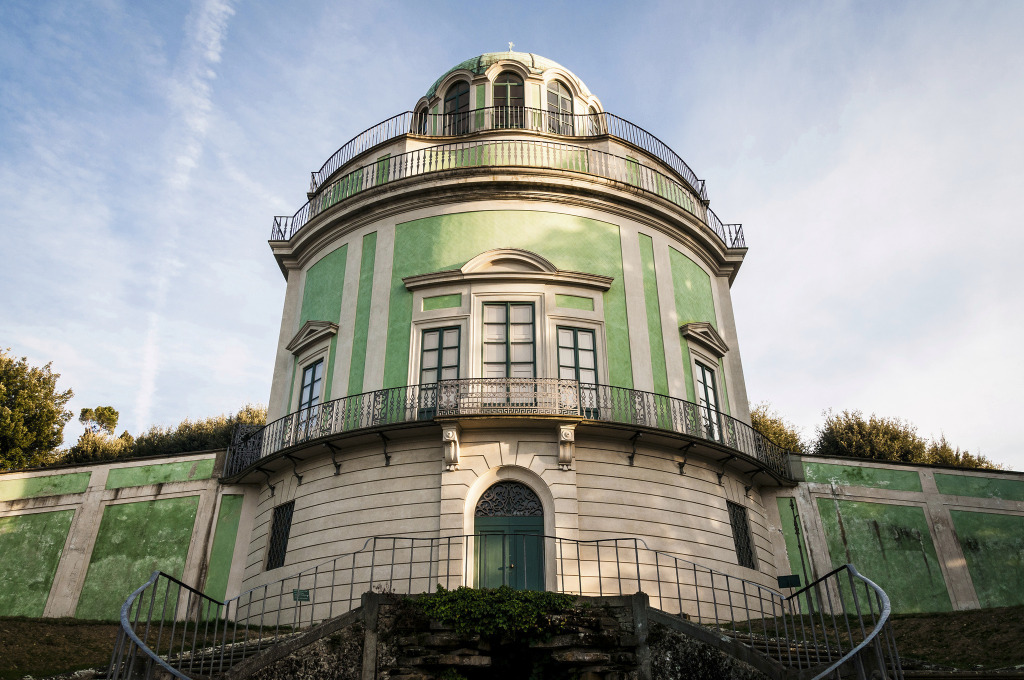
Laid out by Giulio Parigi and also mentioned in Dan Brown's Inferno, the Viottolone is a wide gravel path that leads to the Gate of Porta Romana. Going down this avenue, which is lined with cypresses and statues, you will reach the Isolotto complex, an oval-shaped island in a large pond surrounded by clipped hedges and trees. Also known as the Island Pond, the Isolotto was laid out by Giulio and Alfonso Parigi in the first half of the 17th century and surely represents one of the main attractions in Boboli. At the centre of the island, the Fountain of the Ocean by Giambologna overlooks a geometric garden; in the surrounding pond, the marble statue groups of Perseus and Andromeda are sort of emerging from the water. Continuing down the main path, you will end up in the Prato delle Colonne, a wide lawn whose main feature is the presence of two red granite columns topped with white marble vases. Before exploring the southwest and northwest sides of Boboli, make sure not to miss the Fontana della Botticella (1560) and the Statue of Perseus by Vincenzo Danti, both located near the Gate of Porta Romana.
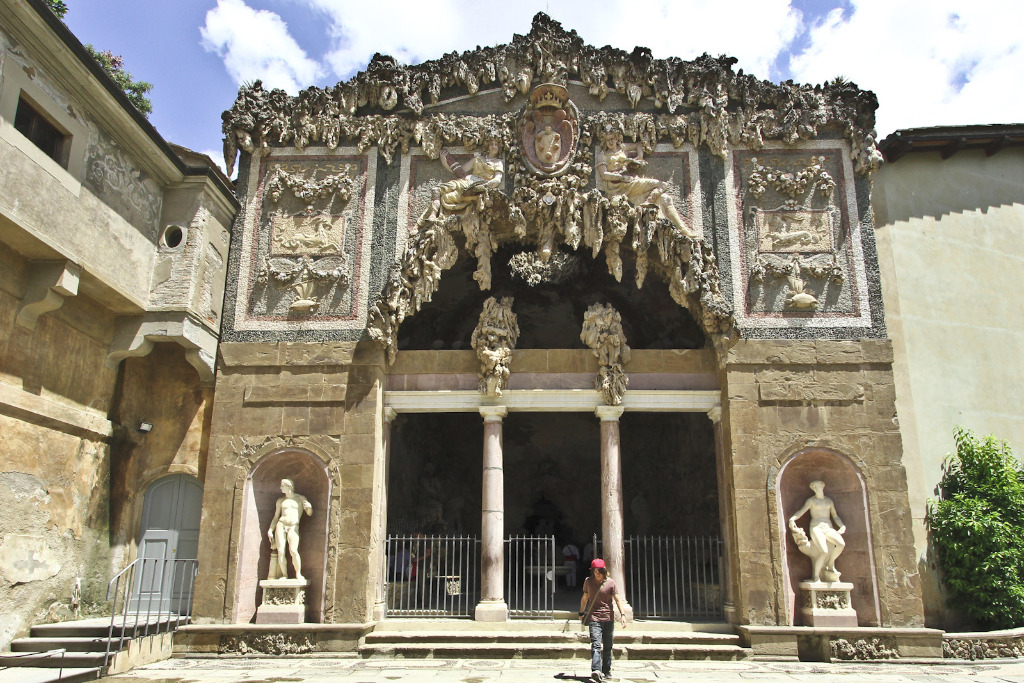
The southwest side of Boboli is occupied by a heavily shaded labyrinth of trees hiding a winding avenue and the remarkable Mostaccini Fountain, built with a long sequence of steps and masks. The fountain served both a decorative and practical purpose; in fact, it was able to attract small birds, which were then caught in nets hanging from the trees.

The northwest side of the gardens boasts the Limonaia (Lemon House) designed to accommodate a large number of citrus trees and other plants in Winter, the Neoclassical Palazzina della Meridiana (present-day Costume Gallery) and some lovely botanical gardens with a rich collection of water plants and exotic plant species.
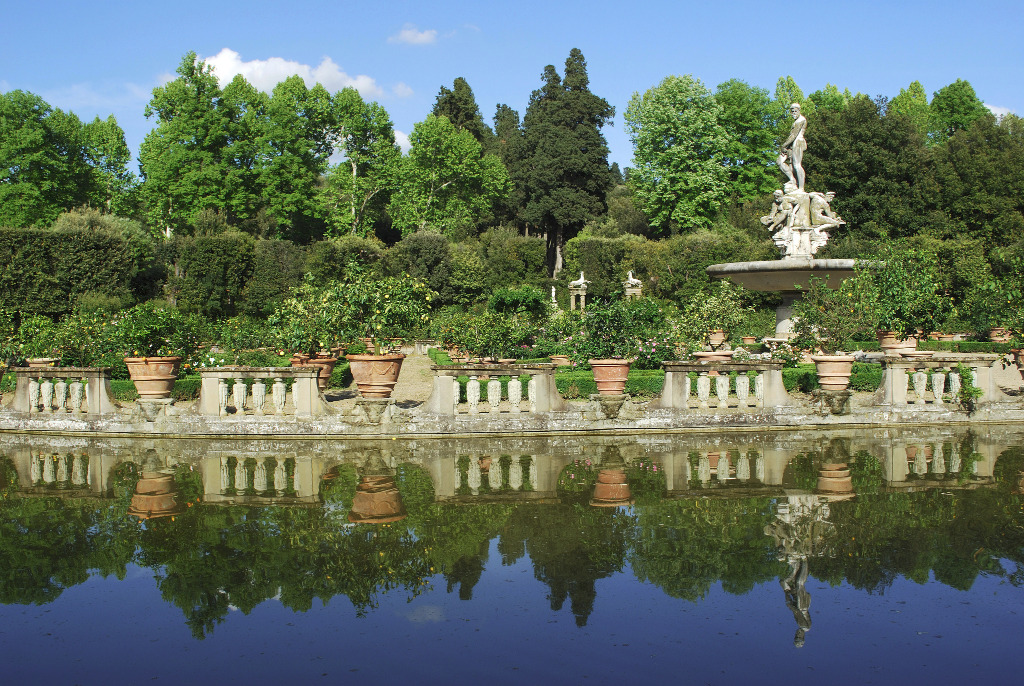
Remember, Florence is just a stone's throw away from Pisa, Lari, Volterra, San Gimignano, Certaldo and other fabulous destinations!



